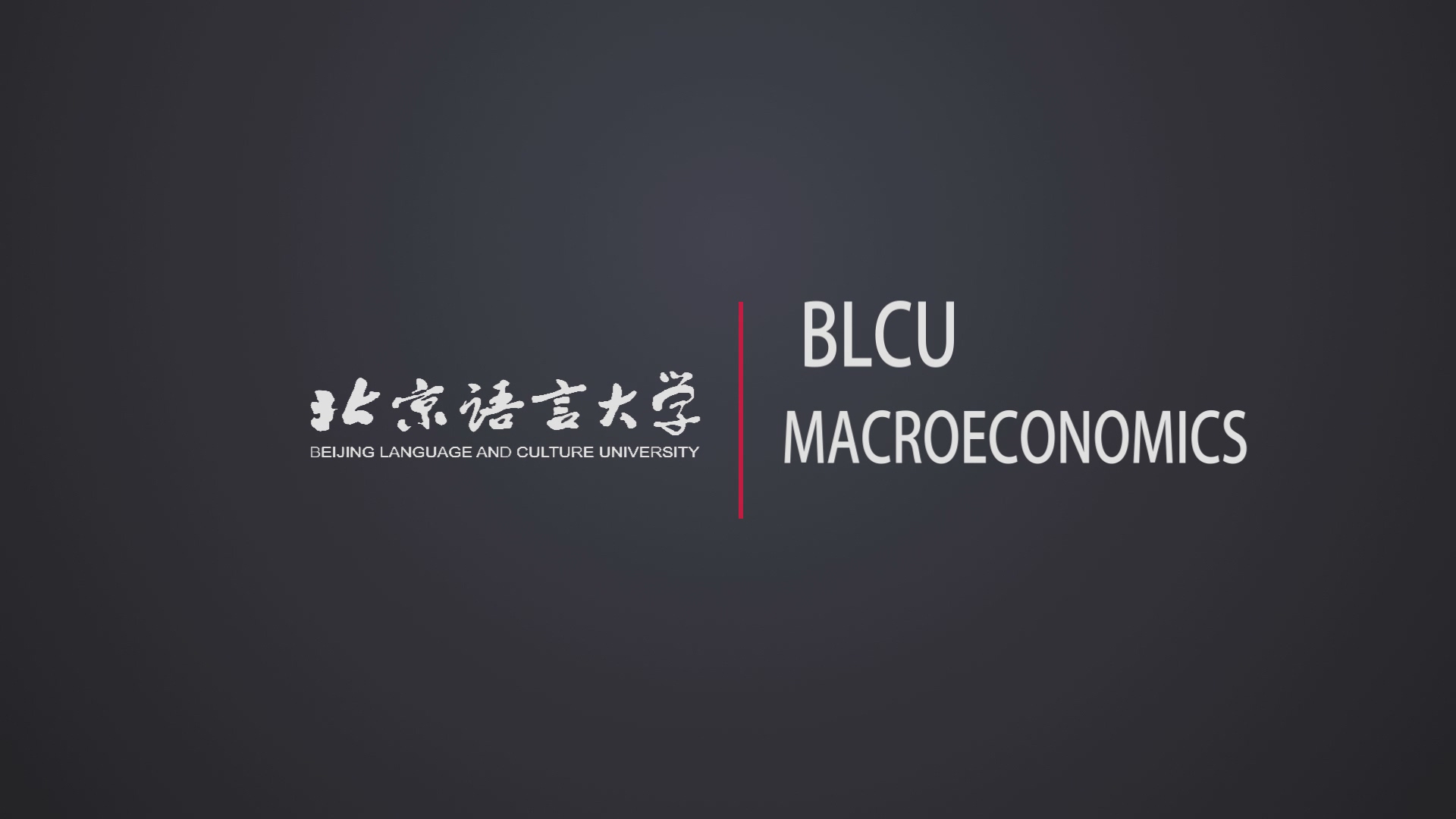
当前课程知识点:Fundamentals of Inorganic Materials Science > 5 Phase equilibrium > 5.4 Binary diagrams > 5.4.3 Other five types of phase diagrams of binary systems
返回《Fundamentals of Inorganic Materials Science》慕课在线视频课程列表
返回《Fundamentals of Inorganic Materials Science》慕课在线视频列表
Hello everyone
In this lesson let’s study
the other five types of binary system phase diagrams
First let ’s look at the fourth type
the binary system phase diagram with a compound which can form or decompose at some temperature
In the figure on the left
when the compound C is heated to TD below the eutectic temperature
it decomposes into crystals A and B
No liquid occurs
There is no liquidus in equilibrium with compound C on the phase diagram
It is impossible to crystalize C directly from the liquid phase
C can only be generated by the solid phase reaction between crystals A and B
The compound C in the right figure only exists in a certain temperature range
and it also decomposes at low temperature
With the knowledge of this
the crystallization paths of melts 1 and 2 are relatively easy to be understood
Let's learn this phase diagram
In the figure, crystal C only exists in a certain temperature range
it is also an incongruent melting compound
when you analyze the crystallization path of melt 3
on the basis of the previous knowledge point
you need to pay attention that
when cooled to a low temperature stage
C will decompose into crystals A and B
The following is the fifth type of phase diagram
a binary system phase diagram with polycrystalline transition
This type of phase diagram includes two different ones
one is that the crystal transition occurs below the eutectic point
and the other is that the crystal transition occurs above the eutectic point
We will introduce them in detail below
In the figure on the left
at the crystal transition point P phase A
will have a crystal transition between Aα and Aβ
The crystal transition temperature is lower than the eutectic point
the isotherm of the crystal transition is below point E
In the phase region above this curve
crystal A exists in the form of Aα
and the phase region below this curve
crystal A exists in the form of Aβ
In the figure on the right
the crystal transition temperature TP is higher than the eutectic temperature TE
At point P
a crystal transition occurs between Aα and Aβ
and there is a liquid phase in the system
At this same time, three phases Aα
Aβ and liquid coexist in equilibrium
point P is also an invariant point
which is the crystal transition point
It is easy to understand that
this crystal transition point cannot be the end point of crystallization
This is the binary phase diagram of the CaO-SiO2 system
The transition temperature of α-cristobalite and α-tridymite in the figure is 1470 ℃
which is above the eutectic point 1436 ℃
The transition temperature of α-CS and β-CS is 1125 ℃
that is, the two crystal forms of wollastonite
transform at a temperature lower than the eutectic point
The crystallization route of melt 1 in this phase diagram is easy to analyze
Above TP temperature it is the simplest phase diagram
Pay attention to TP
crystal transition occurs between Aα and Aβ
and Aα will transform into Aβ completely
The crystallization products are B and Aβ
In this phase diagram crystal Aα will crystallize from melt 2 firstly
When it is cooled to TP
the crystal transition will occur
and three phases coexist
The liquidus point remains at P
until the crystal transition is completed
The liquid continues to cool with continuous crystallization of Aβ
the following analysis of the crystallization path is easier
This is the sixth type of phase diagram we will learn
a binary system phase diagram with liquid phase stratification
In the phase diagrams of the five binary systems discussed earlier
the liquid phases are completely miscible
In some practical systems
the two components are not completely miscible in the liquid state
and can only be miscible finitely
At this time
the liquid separates into two parts
one is the saturated solution of component B in component A (L1)
and the other is the saturated solution of component A in component B (L2)
The cap-shaped area CKD in the figure is a liquid-liquid phase separation area
As the temperature rises
the solubility of the two liquids increases
their compositions are getting closer and closer
Reaching the highest point K in the hat-shaped region
the compositions of the two liquids are the same
and the stratification phenomenon disappears
Point K is a critical point
The temperature at point K is called critical temperature
Point E is the eutectic point of A and B
and there is another invariant point F in the system
The phase change that occurs at point F is
LC → LD + A
that is when cooled rystal A will crystallize from liquid C
and LC liquid is transformed into liquid LD with a low content of crystal A
Next, let's take a look at the crystallization path of melt 1
Cooled down to L1 temperature
the liquid begins to stratify
and is divided into two liquid phases of different compositions, L1 and L1'
Then with the decrease of temperature
and the melt will be divided into two liquid phases of different compositions, L2 and L2'
When cooled to TD
liquid LC continues to decompose into liquid LD and crystal A
until liquid LC is exhausted
After liquid LC disappears
the temperature of the system continues to fall
The liquidus point changes from point D to E along the liquidus DE of crystal A
and the crystallization ends at point E
The crystallization products are crystals A and B
In the phase diagrams of the CaO-SiO2 and MgO-SiO2 systems
there is a liquid-liquid stratification zone at the region of high SiO2 content.
We will give you a detailed analysis when we talk about professional phase diagrams
This is the seventh type
a binary system diagram with a complete solid solution
Above the liquidus a4b is the high-temperature liquid region
below the solidus a5b is the single-phase region of the solid solution
and the middle is the solid-liquid two-phase region where the liquid and solid solution are in equilibrium
During the crystallization of Melt 1
the liquidus point goes from point 2 to 6
and the solidus point goes from point 3 to 7
Attention this crystallization end point is a point on the liquidus.
Moreover
the solid solution is a kind of crystal
and the diffusion speed of atoms is very slow
It is not easy to adjust the composition like a liquid solution
As long as the cooling rate is not slow enough during the crystallization process
unbalanced crystallization is likely to occur
This is the eighth type
a binary phase diagram with a limit solid solution
Solid solution can be formed between A and B
but the solubility is limited
and cannot be dissolved in any ratio
In the figure, SA (B) represents
a solid solution formed by dissolving B into A
SB (A) represents
a solid solution formed by dissolving A into B
aE is the liquidus of SA (B)
and bE is the liquidus of SB (A)
aC and bD are solidus
Point E is the eutectic point of SA (B) and SB (A)
Point C represents the maximum solid solubility of B in A
point D represents the maximum solid solubility of A in B
CF is the solvus line of SA (B)
DG is the solvus lines of SB (A)
According to the trend of these two solvus curves
the solubility of the two components A and B
decreases with the dropping of temperature
The crystallization paths of melt 123 in the picture
is basically the same as the one in the simplest phase diagram
But it should be noted that
the change of the initial solid point is moved on the solidus
and can no longer correspond to pure A and B
The crystalline product is two solid solutions of SA(B) and SB (A)
This figure is
a binary phase diagram of a discontinuous solid solution without eutectic point
There is no eutectic point between SA (B) and SA(B)
but there is a peritectic point J
During cooling
when the liquid point moves to point J
a peritectic process will occur
Liquid L reacts with SA(B) to form SA(B)
We analyze the crystallization path of melt 3
First of all when cooled to a point on SA (B)
SA(B) will begin to crystalize from the melt
When the temperature drops to point J peritectic reaction occurs
SA (B) transfers to SA(B)
The solid point moved from point C to F to G
Then SA(B) disappears
and the liquidus point moves away from point J
and moves to point F
SA(B) crystalizes from the melt continuously
When the solid point reaches point E
the solid point and the system composition point coincide
and the crystallization have finished
It is worth noting that
the end point of crystallization of melt 3
is point F on the liquidus BJ
The crystallization end point is a point on a liquidus
most crystallization end points are invariant points
this is different
This table summarizes the crystallization rules of different composition points
on the binary phase diagram with the transition-discontinuous solid solution
You can learn from the phase diagram
with an inconsistent molten compound
No more details here
everyone
here we have learned
the basic 8 types of binary systems
We hope you can grasp the key points of each phase diagram
and analyze the property of invariant points,
lay the foundation for the application of professional phase diagram
Class is over
See you
-Test for chapter 1
-2.1 Type of defect
-2.2.1 The expression methods of point defects
--2.2.1 The expression methods of point defects
--2.2.1 The expression methods of point defects
-2.2.2 The rules for writing of defect reaction equation
--2.2.2 The rules for writing of defect reaction equation
--2.2.2 The rules for writing of defect reaction equation
-2.3 Calculation of thermal defect concentration
--2.3 Calculation of thermal defect concentration
--2.3 Calculation of thermal defect concentration
-2.4 Non-stoichiometric compounds
--2.4 Non-stoichiometric compounds
--2.4 Non-stoichiometric compounds
-Homework for chapter 2
-Test for chapter 2
-3.1 The classification of solid solutions
--3.1 The classification of solid solutions
--3.1 The classification of solid solutions
-3.2 Substitutional solid solution
--3.2 Substitutional solid solution
--3.2 Substitutional solid solution
-3.3 Interstitial solid solution
--3.3 Interstitial solid solution
--3.3 Interstitial solid solution
-3.4 The research method of solid solutions
--3.4 The research method of solid solutions
--3.4 The research method of solid solutions
-3.5 Questions for crystal imperfection and solid solution
--Questions for crystal imperfection and solid solution
-Homework for chapter 3
-Test for chapter 3
-4.1 Melt structure
-4.2 The properties of the melt
--4.2.1 The properties of the melt_viscosity
--4.2.2 The properties of the melt_surface tension
--4.2 The properties of the melt
-4.3 The characteristics of glass
--4.3 The characteristics of glass
--4.3 The characteristics of glass
-4.4 The formation of glass
--4.4.1 The formation of glass_kinetics conditions
--4.4.2 The formation of glass_crystal chemical conditions
-4.5 The structure of glass
-4.6 The typical glass
-4.7 Questions for melt and glass
--Questions for melt and glass
-Test for chapter 4
-5.1 Phase equilibrium in silicate systems
--5.1 Phase equilibrium in silicate system
--5.1 Phase equilibrium in silicate system
-5.2 One-component system phase diagram
--5.2 One-component system phase diagram
--5.2 One-component system phase diagram
-5.3 Applications of one-component diagrams
--5.3 Applications of one-component diagrams
--5.3 Applications of one-component diagrams
-5.4 Binary diagrams
--5.4.1 Binary diagram with eutectic point
--5.4.2 Binary system with a congruent melting compound and one with an incongruent melting compound
--5.4.3 Other five types of phase diagrams of binary systems
-5.5 Applications of binary phase diagrams
--5.5 Applications of binary phase diagrams
--5.5 Applications of binary phase diagrams
-5.6 Ternary diagrams
--5.6.1 Representation of ternary system composition
--5.6.1 Representation of ternary system composition
--5.6.2 Three-dimensional state diagram and plane projection diagram of a simple ternary system
--5.6.2 Three-dimensional state diagram and plane projection diagram of a simple ternary system
--5.6.3 (1) Basic types of ternary phase diagrams
--5.6.3 (2) Basic types of ternary phase diagrams
--5.6.3 (3) Basic types of ternary phase diagrams
--5.6.3 Basic types of ternary phase diagrams
-5.7 Applications of ternary phase diagrams
--5.7 Applications of ternary phase diagrams
--5.7 Applications of ternary phase diagrams
-5.8 Research methods of phase equilibrium
--5.8 Research methods of phase equilibrium
--5.8 Research methods of phase equilibrium
-5.9 Questions for phase equilibria
--Questions for phase equilibria
-Homework for chaper 5
-Test for chapter 5
-6.1 Overview of diffusion
-6.2 The kinetic equations of diffusion
--6.2 The kinetic equations of diffusion
--6.2 The kinetic equations of diffusion
-6.3 The thermodynamic equation of diffusion
--6.3 The thermodynamic equation of diffusion
--6.3 The thermodynamic equation of diffusion
-6.4 Diffusion mechanisms and diffusion coefficient
--6.4 Diffusion mechanisms and diffusion coefficient
--6.4 Diffusion mechanisms and diffusion coefficient
-6.5 Diffusion in solid
-6.6 Factors affecting diffusion
--6.6 Factors affecting diffusion
--6.6 Factors affecting diffusion
-6.7 Questions for diffusion
-Homework for chaper 6
-Test for chapter 6
-7.1 Overview of solid state reactions
--7.1 Overview of solid state reactions
--7.1 Overview of solid state reactions
-7.2 Kinetic equation of solid state reaction
--7.2 Kinetic equation of solid state reaction
-7.3 Factors affecting the solid state reaction
--7.3 Factors affecting the solid state reaction
--7.3 Factors affecting the solid state reaction
-Homeword for chapter 7
-8.1 The categories of phase transformation
--8.1 The categories of phase transformation
--8.1 The categories of phase transformation
-8.2 Crystallization
--8.2.1 Crystallization thermodynamics
--8.2.2 Crystallization kinetics
-8.3 Phase Separation of glass
--8.3 Phase separation of glass
--8.3 Phase separation of glass
-8.4 Questions for phase transformation
--Questions for phase transformation
-Test for chapter 8
-9.1 Overview of sintering
-9.2 The driving forces and models of sintering
--9.2 The driving forces and models of sintering
--9.2 The driving forces and models of sintering
-9.3 Solid state sintering
--9.3.1 Evaporation-Condensation mass transfer
--9.3.2 Diffusion mass transfer
-9.4 Liquid phase sintering
--9.4.2 Solution-Precipitation mass transfer
-9.5 Grain growth and secondary recrystallization
--9.5.2 Secondary recrystallization
--9.5 Grain growth and secondary recrystallization
-9.6 Factors affecting sintering
--9.6 Factors affecting sintering
--9.6 Factors affecting sintering
-9.7 Questions for sintering
-Homework for chapter 9
-Test for chapter 9



